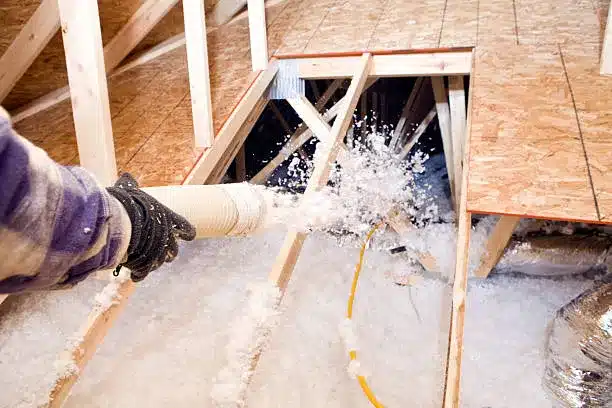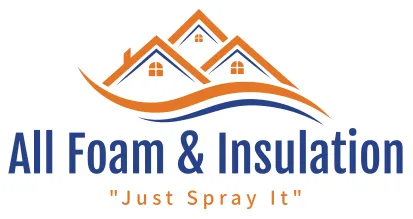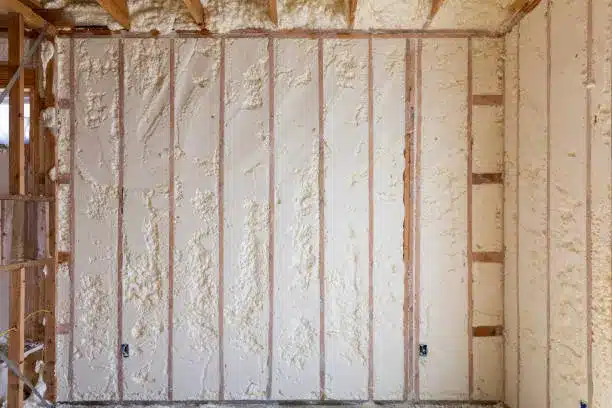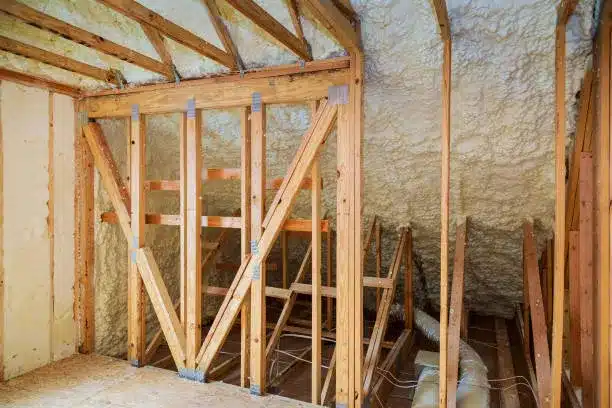A properly insulated attic is your home’s first line of defense against energy loss, but its role in pest prevention is often overlooked. Using blown-in insulation creates a continuous, seamless barrier that physically obstructs rodents and insects from nesting and traveling within your attic space. Unlike traditional batt insulation, which leaves gaps and seams pests can easily exploit, a dense layer of loose-fill material fills every crack and crevice, creating an environment that is inhospitable to unwanted guests. Certain materials, like borate-treated cellulose, add another layer of defense by acting as a natural repellent.
This article provides a detailed look at how a professionally installed blown-in insulation barrier can fortify your home against pests. The information comes from years of hands-on experience in attics across the region, addressing both insulation deficiencies and the pest problems that often accompany them. We’ll explore the best materials, the importance of proper installation, and what you should consider before upgrading your attic.
How a Seamless Barrier Deters Pests
The effectiveness of blown-in insulation against pests comes from its application method and physical properties. It’s installed using a hose that blows the material into the attic, allowing it to settle into a dense, uniform layer that conforms to the space. This process eliminates the gaps and voids common with pre-cut batts.
Rodents like mice and rats look for materials they can easily shred and move to build nests. While they can tunnel through fiberglass batts, the loose-fill nature of blown-in insulation makes this difficult. When a rodent tries to burrow into it, the material tends to collapse back on itself, frustrating their nesting efforts.
Bonus Tip: The most critical step before installing any new insulation is air sealing. This involves sealing all the small cracks and openings between your attic and the living space below, as well as any penetrations from the outside. A report from the Environmental Protection Agency highlights that air sealing is a primary strategy for keeping pests out and improving energy efficiency.
Choosing the Right Pest-Resistant Material
Not all blown-in insulation materials offer the same level of pest defense. While any seamless barrier is an improvement, some materials have properties that make them actively hostile to pests.
Cellulose, made from recycled paper, is often treated with borates. Borates are a class of naturally occurring minerals that are safe for humans but act as a powerful insecticide and rodent repellent. The Cellulose Insulation Manufacturers Association explains that borates disrupt the digestive systems of insects and are unpalatable to rodents, making the insulation an undesirable home. Fiberglass and mineral wool are inorganic and provide no nutritional value, which also helps deter pests, but they lack the active repellent quality of treated cellulose.
Blown-In Insulation Material Comparison
Material | Pest Resistance Mechanism | Average R-Value (per inch) | Other Key Benefits |
Cellulose | Treated with borates; indigestible and repellent to pests. | 3.2 – 3.8 | Excellent sound dampening; high recycled content. |
Fiberglass | Inorganic; provides no food source. | 2.2 – 2.7 | Naturally moisture and fire-resistant. |
Mineral Wool | Inorganic; dense structure is difficult to burrow through. | 3.0 – 3.3 | Superior fire resistance and soundproofing. |

The Installation Process for Maximum Pest Prevention
A successful pest barrier depends entirely on a meticulous installation process. Simply adding more insulation on top of an existing problem won’t solve anything.
- Inspection and Removal: The first step is always a thorough attic inspection. If there’s an active infestation, it must be handled by a licensed pest control professional. Any old, contaminated insulation full of droppings and urine should be removed. According to the Centers for Disease Control and Prevention, rodent droppings can carry diseases, making professional removal and sanitation essential.
- Comprehensive Air Sealing: Once the attic is clean, every potential entry point is sealed. This includes gaps around plumbing vents, electrical wiring, light fixtures, and the attic hatch. This is the physical exclusion part of the process and is arguably the most important for long-term success.
- Correct Depth and Density: Finally, the insulation is blown in to a depth that meets or exceeds local building codes for R-value. A thick, dense application ensures there are no thin spots for pests or air to get through.
Bonus Tip: Inspect the exterior of your home for any overhanging tree limbs that touch the roof. Rodents often use these branches as a bridge to access your home. Trimming them back is a simple but effective preventive measure.
Things to Consider Before Making a Decision
Before committing to a new insulation barrier, think about a few key factors:
- Existing Infestations: New insulation is a preventative tool, not a solution for a current pest problem. You must eliminate any active infestations first.
- Attic Ventilation: It’s important that the new insulation doesn’t block soffit vents or other attic ventilation systems. Proper airflow is needed to prevent moisture buildup and mold growth.
- Long-Term Value: Consider the dual benefits. While your primary goal might be pest prevention, upgrading your insulation will also lower your energy bills and may improve your home’s comfort and soundproofing.
Frequently Asked Questions
Will new insulation get rid of the mouse problem I already have?
No. You need to work with a pest control expert to remove the existing mice and seal their primary entry points from the outside. The insulation barrier is designed to prevent future infestations.
How long does the pest repellent in cellulose insulation last?
The borate treatment is infused into the insulation fibers during manufacturing. It does not evaporate or wear out, so it remains effective for the entire lifespan of the insulation.
Can pests still live in fiberglass insulation?
While fiberglass provides no food source, pests can still burrow and nest in it if it’s not installed properly as a dense, seamless barrier. They find it less desirable than other materials but will use it if no better options are available.
What are the first signs of pests in an attic?
Common signs include scratching or scurrying sounds at night, finding droppings or urine stains on existing insulation, noticing gnaw marks on wood or wiring, and discovering nests made from shredded materials.
Is pest-control insulation safe for my family?
Yes. The borates used to treat cellulose insulation have very low toxicity for humans and pets, similar to table salt. It is widely considered safe for residential use when installed correctly.
How much more does pest-control insulation cost?
Borate-treated cellulose insulation may have a slightly higher material cost than standard fiberglass, but the difference is often minimal when factored into the total project cost. The long-term savings from preventing pest damage and potential remediation can make it a very cost-effective choice.
Can I install blown-in insulation myself?
While DIY is possible, it’s not recommended for achieving a perfect pest barrier. Professionals have the equipment to ensure the proper density and coverage, and more importantly, they have the expertise to perform the critical air sealing work beforehand.
Does this insulation also stop insects?
The borates in cellulose are effective against a wide range of insects, including cockroaches, silverfish, ants, and even termites. This makes it a broad-spectrum pest solution.
A Proactive Step for a Pest-Free Home
Upgrading your attic with a seamless blown-in insulation barrier is one of the most effective long-term strategies for preventing pest infestations. By eliminating the gaps pests use to travel and nest, and by choosing a material that is actively repellent, you create a durable and reliable defense for your home. Before moving forward, take the time to evaluate your attic’s current condition, address any existing pest issues, and consider your long-term goals for both pest control and energy efficiency.
Get a Professional Assessment
The best way to determine if a blown-in barrier is right for your home is to have a professional look at your attic. An experienced technician can identify signs of pest activity, assess your current insulation levels, and find hidden air leaks that need sealing. For a comprehensive evaluation, we recommend contacting a qualified insulation contractor in your area to schedule a consultation.
Sources
- Environmental Protection Agency – Provides information on the benefits of air sealing homes to prevent pests and improve indoor air quality.
- Cellulose Insulation Manufacturers Association – Explains the role and safety of borates used as a fire retardant and pest repellent in cellulose insulation.
- Centers for Disease Control and Prevention – Offers guidelines on the safe cleanup of rodent-contaminated areas, highlighting the potential health risks.




